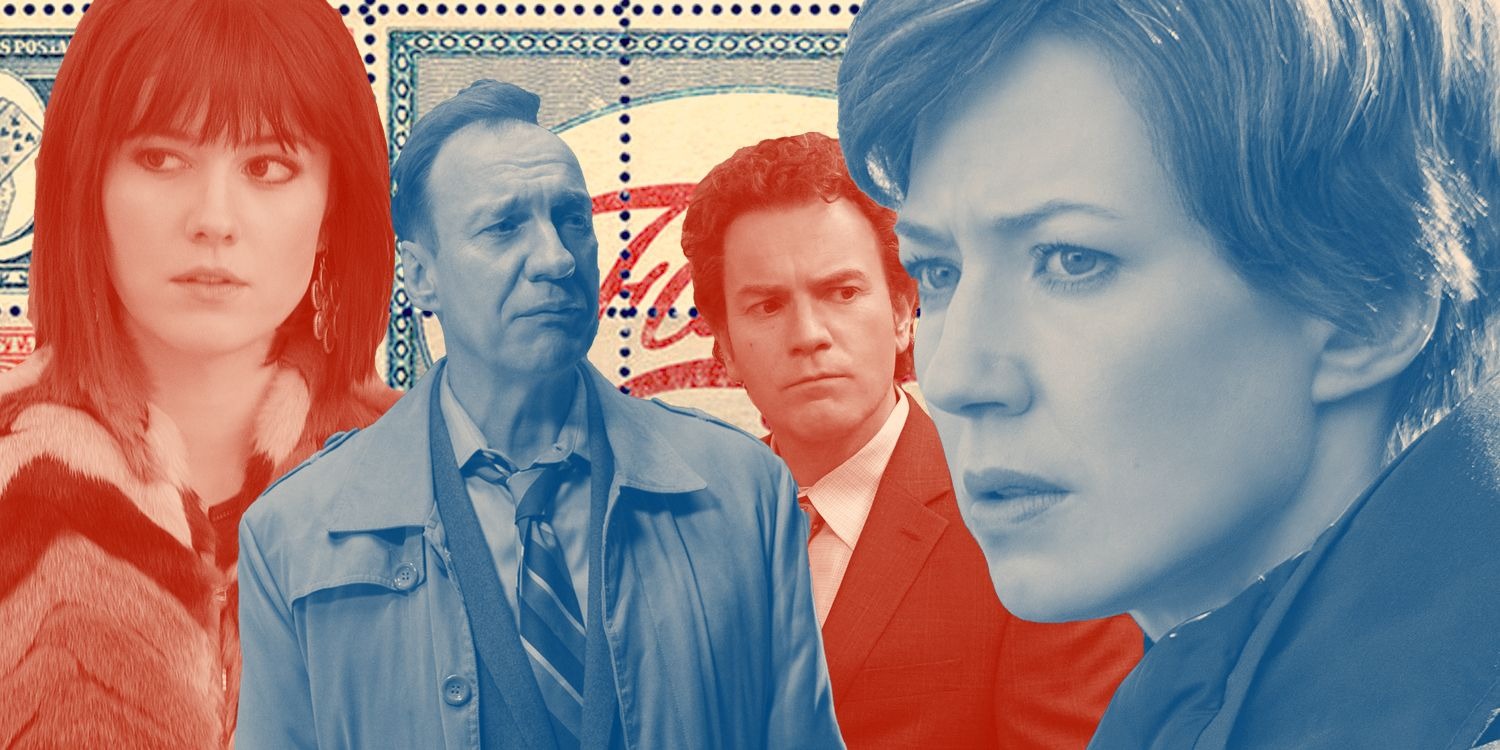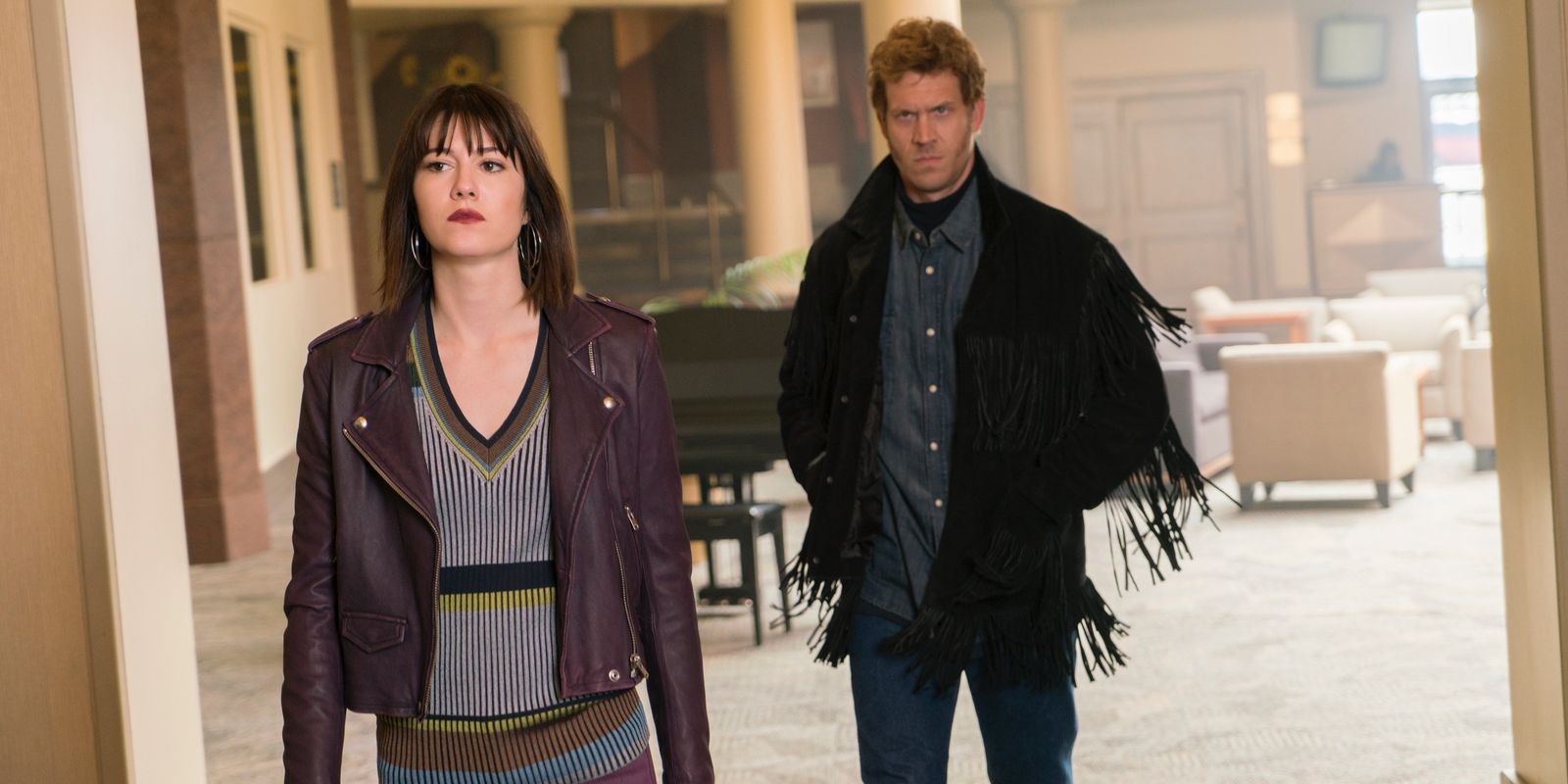Season 3 of FX’s Fargo has come to an end. Whether you felt this latest chapter from Noah Hawley’s unusual Midwestern crime tale reached new heights or that its folksy style was starting to wear thin, there’s no denying the season packed quite a lot into its ten episodes.
It had a strong cast lineup—Ewan McGregor taking on two separate roles, alongside standout performances from Carrie Coon, Mary Elizabeth Winstead, Michael Stuhlbarg, David Thewlis (who, like Coon, had a remarkable year in 2017), and appearances by Ray Wise and Mary McDonnell.

As things wrapped up, the odd tale featuring Emmit and Ray Stussy, Gloria Burgle, Nikki Swango, and the ominous presence of the creepy V.M. Varga started to feel strangely familiar.
Once again, the story circled back to a familiar dilemma: how do people deal with a society where the usual codes of behavior no longer apply? Compared to the earlier seasons, this third one took place during a time when disorder had already been established.
While the stories of Lou and Molly Solverson focused on resisting madness, Season 3 placed its attention on Gloria Burgle and Nikki Swango—two very different women trying to fix a situation that had already spiraled.
With that in mind, the final episode tried to weigh moral justice with violent payback, while also suggesting that justice—though delayed—might still be possible. Let’s now look more closely at how Season 3 treated chaos, order, and the characters entangled between them.
Varga Is Disorder Personified
Every season of Fargo seems to feature a devil-like presence who pushes ordinary Midwestern men into chaos, often through quiet manipulation.
In the second season, this role was divided among members of the Gerhardt family, Mike Milligan (played by Bokeem Woodbine), and Hanzee Dent (played by Zahn McClarnon). For Season 3, David Thewlis’ portrayal of V.M. Varga resembled Billy Bob Thornton’s Lorne Malvo, although Varga presented himself as part of the system.
Unlike Malvo, who lurked on the fringes of society, Varga operated from the side, posing as an unassuming middle manager who avoided accountability at all costs. Whereas Malvo was more of a wild predator who thrived on the thrill of the hunt, Varga came across as something less tangible.
He represented unchecked greed—capitalism at its worst—consuming anything he could access and discarding the rest once satisfied. His presence embodied disorder itself, mirrored in his poor hygiene, purposely tacky wardrobe, and decaying teeth that served almost like his brand.
With all these traits, it’s understandable that stopping him would require the efforts of both Gloria and Nikki—even if their partnership wasn’t completely in sync.
Nikki Swango’s Vengeance
Mary Elizabeth Winstead’s Nikki Swango introduced herself early on as someone capable of creating chaos, but she always followed her structure. Having spent time behind bars, she understood the concept of facing consequences, which separates her from someone like Varga.
Because Nikki had been held accountable in the past, she was uniquely suited to hold Varga accountable now. Positioned between the law and its absence, she could act without interference from individuals like Moe Dammick, who often hindered Gloria.
Though Varga eventually landed in Gloria’s hands—or so it seemed—Nikki still managed to damage his operations in a way that made him realize that even he couldn’t bend every rule. Her decision to fight back was crucial. Nikki stood out as a surprise throughout the season.
Initially introduced as a parolee with a Bridge hobby, she later became one of the show’s strongest and most entertaining figures. Although she didn’t live long enough to bring Varga down herself, her attempt came close.
Unfortunately, her story ended in a gunfight with a police officer who, like many others in Fargo and Coen Brothers films, happened to be at the wrong place at the wrong time.
Considering the choices she made and the lives she affected, it would’ve felt too unrealistic for her to take out Emmit and quietly settle down afterward. Tragedy runs quietly through Fargo, and Nikki’s fate reflects that tone.
Mr. Wrench Is on A Different Path
Mr. Wrench, the hired killer first seen in Season 1 alongside Mr. Numbers (played by Adam Goldberg), and who briefly appeared in Season 2 as a child, wasn’t an obvious choice to link all three seasons.
But while each season of Fargo has made internal connections, Mr. Wrench has become a symbol tying together the various crime operations depicted across the series. His presence, however, went beyond simply linking timelines.
During a spiritual moment in a bowling alley—a reference point that called back to The Big Lebowski—Paul Marrane told Nikki something that hinted at Mr. Wrench’s future.
Though both Nikki and Wrench were involved in violence, Paul stepped in to help them survive and even handed them a car so they could go after Varga. Mr. Wrench continued to display his skills, like when he threw a hatchet at Yuri and removed part of his ear.
Paul, on the other hand, indicated that he’d advocated for Wrench and that someone had given him another chance at a better life. After the dramatic scene in the self-storage facility that left Varga nearly dead, Mr. Wrench seemed to disappear for some years.
He came back later, in Emmit Stussy’s kitchen, carrying out an execution that served as poetic justice. That moment underlined the message that those who do evil will eventually face consequences. Emmit might have tried to restore his family life, but that alone wasn’t enough to clear his past misdeeds.
Ray Wise Hints that Old Rules Still Apply
Paul Marrone, portrayed by Ray Wise, isn’t just the kind of seatmate one would enjoy on a flight from Minnesota to California—he also had a unique ability to handle strange officers like the one played by Rob McElhenney.
But his role had more weight; Paul’s presence hinted at divine justice. In one key moment, he even directed punishment toward the unrepentant killer, Yuri. That mystical sequence made it clear that the chaos surrounding the season hadn’t run completely wild.

Paul represented a force pushing back against the destruction. His interactions with Nikki and Mr. Wrench hinted that he was recruiting them to restore some form of moral justice. He set them on their way, ensuring they understood what had to be done.
Though Paul didn’t return in the season’s last episode, his earlier conversations with Gloria and Nikki had a lasting influence. The bowling alley scene, in particular, marked a turning point in the story.
After weeks of watching Varga and his men operate beyond law and order, the show hinted again at its enduring idea: evil will face consequences, and those who remain true to justice will still have their day.
Cut to Black
That little grin from DHS agent Gloria Burgle said it all. When Varga tried to predict who would step into the interrogation room next, Gloria’s expression suggested she believed she had finally cornered him.
While she held on to that confidence, Varga, on the other hand, seemed just as sure that his usual tactics would work again. The conclusion left things uncertain, offering a type of ending that took a different direction from how Seasons 1 and 2 wrapped up.
The earlier seasons might have left a few questions open, but they still found ways to restore balance by the final episode. By contrast, Season 3 finished with a dark screen, leaving the audience to guess whether Varga would be imprisoned or once again find a way out.
That uncertain outcome aligned well with this season’s idea: society has become harder to understand, and more confusing than before—even compared to flying saucers in Season 2. The show shifted away from clearly defined justice toward a messier, more unpredictable reality.
Varga had mastered the art of twisting the truth and reality to suit himself. Because of that, ending on a note of ambiguity was a fitting conclusion to his story.



